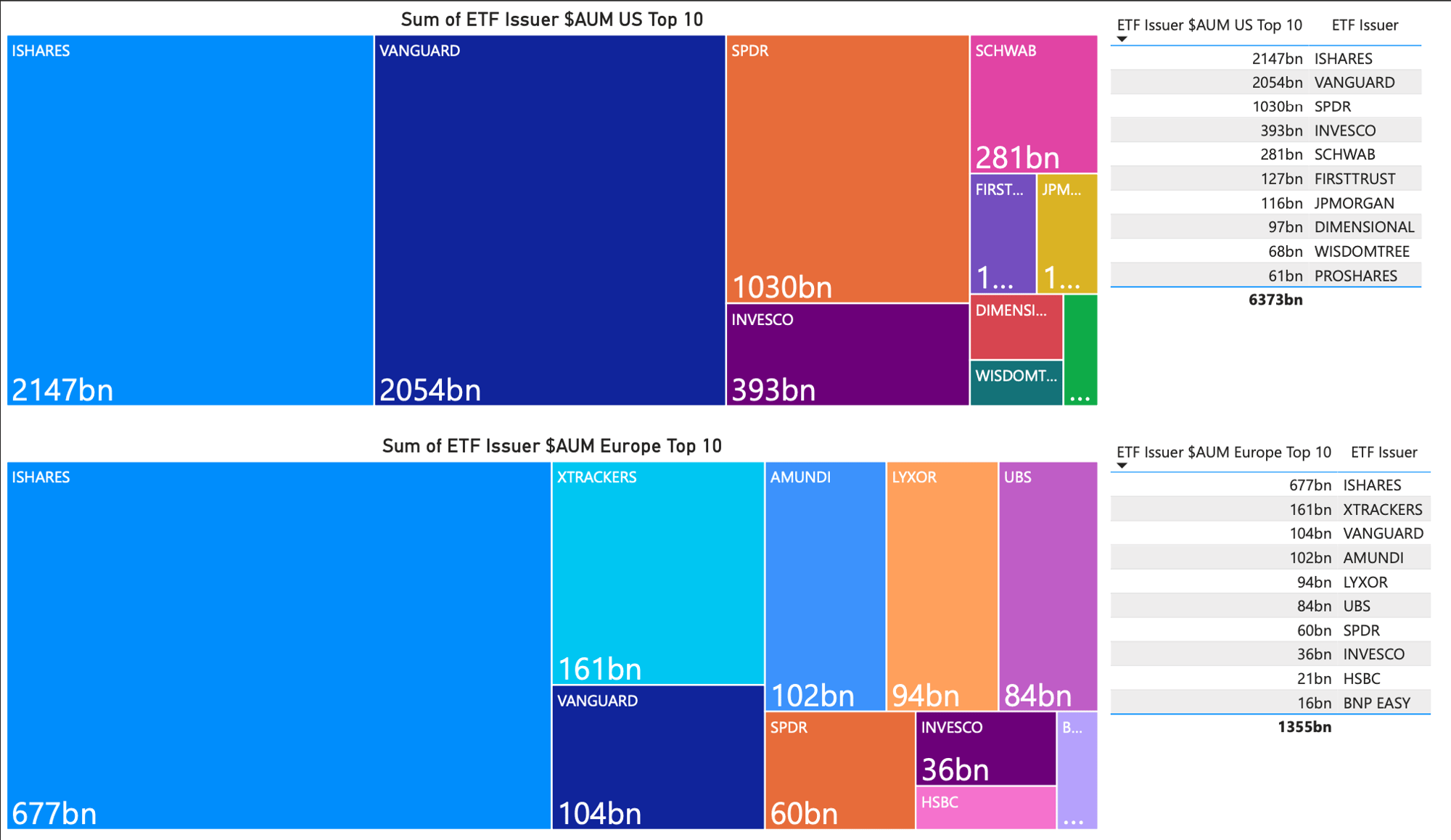Ultumus tracks the ETF market globally, and it is clear that the largest ETFs are nearly all listed in the US.

There are many reasons. Everything seems bigger in the US, from sandwiches and waistlines to skyscrapers, mountains and rivers. US capital markets are larger than in Europe: US equity market capitalization is USD 40 trillion whereas Euronext, London Stock Exchange, Deutsche Boerse, Nasdaq Nordic and Baltics, and SIX Swiss Exchange (which owns Ultumus) taken together add up to only about USD 16 trillion. Indeed the largest individual company in the US – Microsoft – has a market cap of USD 2.5 trillion, bigger than the entire German equity market at around USD 2 trillion.
In addition, ETFs make up a larger slice of the pie in the US, especially for equities. ETFs are 12.7% of US Equity markets but only 8.5% in Europe (and even less at 4.4% in Asia Pacific). The ranking is similar for fixed income, where ETFs make up 2.6% of US fixed income assets, 1.8% in Europe (and only 0.4% in Asia Pacific), per iShares.
The net effect is that the total US ETF market is nearly five times larger. US Equity ETFs’ market value of USD 5.972 billion and fixed income ETFs of 1.198 trillion add up to just over USD 7 trillion, against European equity ETFs value of USD 1.119 trillion and fixed income ETFs of 0.404 trillion (as per the August 2023 ULTUMUS flow report).
The largest European ETF, CSP1, the iShares S&P 500 tracker, had a market capitalization of USD 62.17 billion, whereas the largest US ETF, tracking the same index, SPY, is 7 times larger.
CSP1 would not even rank in the top ten US listed ETFs and would only just make it into the top 20.
Only two ETFs – CSP1 and IWDA, iShares Core MSCI World UCITS ETF USD, listed in Europe have a market capitalisation above USD 50 billion, whereas all 30 of the largest US listed ETFs tracked in the ULTUMUS flow report are above USD 50 billion in size.
The US also had a head start: SPY launched in 1993, and the first two European ETFs only launched in 2000. The timing of the first US ETF was also fortunate, at the start of the technology boom, whereas the European products started just as the bubble was bursting.
US financial markets tend to lead trends in most areas, even if Europe probably has the edge on ESG, and has had cryptocurrency ETFs for some years while the US has, as of October 2023, still not approved any (even though there are high hopes for the first ones in 2024).
The US is blazing the trail towards more ETFs, and we are seeing more mutual funds convert into ETFs globally, for multiple reasons including fees, transparency, and tax benefits in some countries. ETFs are growing market share partly because investors are choosing them but also because asset managers are converting some products into ETF format.
Size does matter for the growth of the ETF market. The top 100 most liquid US listed ETFs had bid ask spreads averaging 4.1 basis points, against 25.3 basis points for the rest of the industry, according to iShares.
Though investors in Europe can and do trade US listed ETFs, a globally fungible ETF is not likely any time soon, because the US and Europe have different financial regulations and many Europeans want an ETF structured as a UCITS.
Europe should in time develop its own champion mammoth sized ETFs. Currency share classes need not be an obstacle: ULTUMUS tracks assets at the master class level, aggregating the currency classes.
ETFs have a huge runway of growth ahead, and the momentum is basically travelling West from the US to Europe and Asia, which should catch up with the US in due course.

.png)

